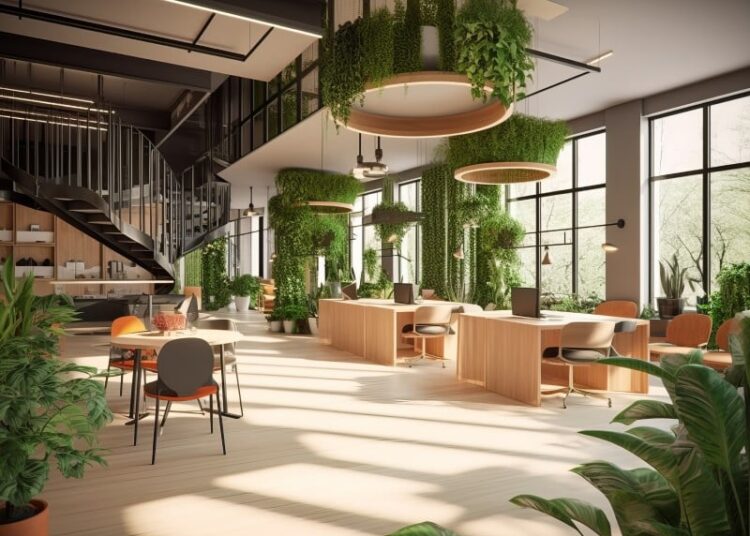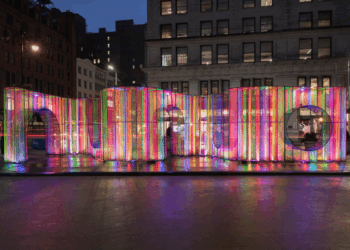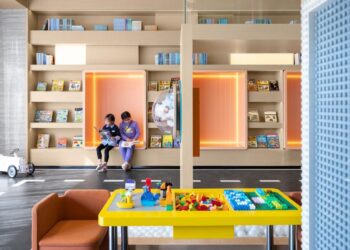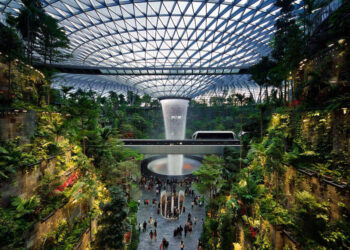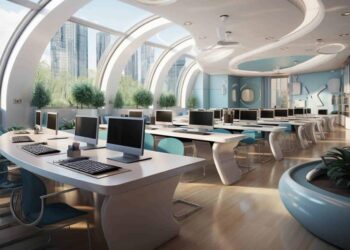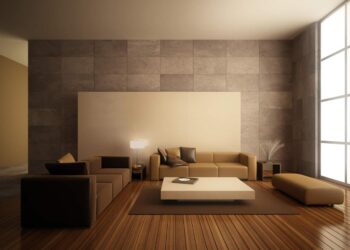Why Nature Belongs Indoors
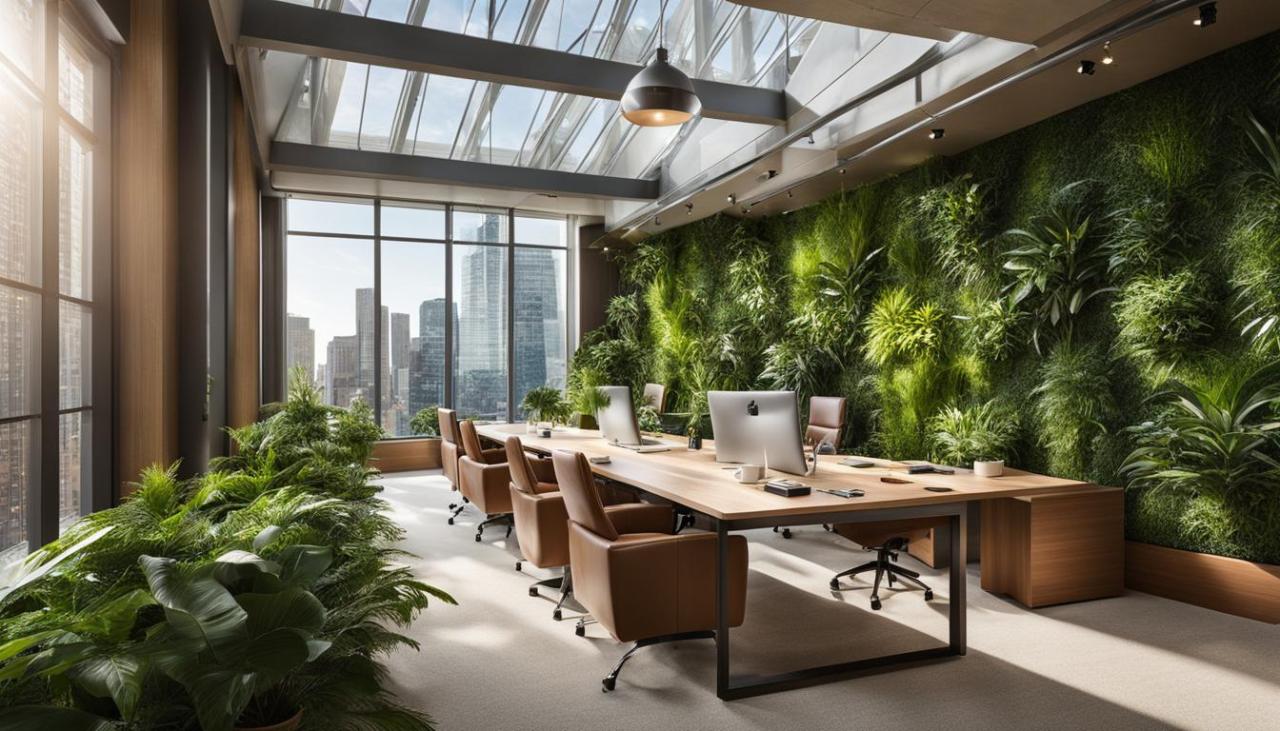
The term “biophilia,” coined by social psychologist Erich Fromm and popularized by biologist E.O. Wilson, describes the innate human tendency to connect with nature and other living systems. This deep-seated connection is not merely a preference; it’s a fundamental biological need with profound implications for our physical and mental health. Ignoring this need in the built environment, particularly where we spend the majority of our waking hours, has demonstrably negative consequences.
A. Evolutionary Imperative: For millennia, humans evolved in natural environments. Our senses, cognitive functions, and biological rhythms are intrinsically linked to natural cycles and stimuli. Modern urban and indoor environments, devoid of these natural cues, can lead to sensory deprivation, stress, and reduced cognitive function—a phenomenon sometimes referred to as “nature deficit disorder.”
B. Scientific Validation: A growing body of research from fields like environmental psychology, neuroscience, and urban planning consistently demonstrates the positive impact of nature exposure. Studies have shown improvements in cognitive performance, stress reduction, enhanced mood, increased creativity, and even faster recovery rates in healthcare settings when natural elements are present.
C. The Urban Dilemma: As global populations increasingly concentrate in urban centers, access to green spaces diminishes. For many city dwellers, the workplace represents a significant portion of their daily indoor time, making the integration of nature within these spaces even more critical. The biophilic office offers a vital antidote to the concrete jungle, providing a restorative haven within the urban sprawl.
D. Employee Well-being and Retention: In today’s competitive talent market, companies are seeking innovative ways to attract, retain, and motivate their employees. Prioritizing well-being through biophilic design sends a clear message that an organization values its people, leading to higher job satisfaction, reduced absenteeism, and improved talent retention.
E. Sustainability and Environmental Responsibility: Biophilic design inherently aligns with sustainability goals. By fostering a connection to nature, it encourages environmental stewardship. Furthermore, many biophilic strategies, such as maximizing natural light and improving air quality, contribute directly to energy efficiency and a reduced ecological footprint for buildings.
Core Principles of Biophilic Design in Offices
Biophilic design is not simply about adding a few potted plants. It’s a nuanced, multi-faceted approach that integrates various elements of nature in sophisticated ways. The principles can be broadly categorized into two main groups: direct connection to nature and indirect connection to nature.
A. Direct Connection to Nature
These principles involve the palpable, direct experience of natural elements within the office.
A. Natural Light and Ventilation:
A. Daylight Maximization: Prioritizing large windows, skylights, and open floor plans to allow maximum penetration of natural light. This reduces reliance on artificial lighting, saves energy, and helps regulate employees’ circadian rhythms, leading to better sleep and alertness.
B. View to Nature: Strategically positioning desks and common areas to offer unobstructed views of green spaces, trees, water features, or even dynamic urban landscapes with natural elements. The presence of trees, water, and varied landscapes in a view is more restorative than views of buildings.
C. Operable Windows: Providing the option for natural ventilation, allowing fresh air to circulate and offering sensory variations like the sound of wind or rain. This also helps in reducing the reliance on energy-intensive HVAC systems.
B. Living Systems and Vegetation:
A. Indoor Plants: Incorporating a variety of indoor plants, from small desk plants to large specimen trees. Plants improve indoor air quality by filtering pollutants, regulate humidity, and provide a sense of calm.
B. Living Walls (Vertical Gardens): Large panels or sections of walls covered with living plants. These create stunning visual features, act as natural air purifiers, improve acoustics, and provide a dense connection to greenery.
C. Atriums and Interior Gardens: Designing multi-story open spaces or courtyards within the building that house extensive natural landscapes, offering a communal oasis for employees.
D. Water Features: Integrating indoor fountains, streams, or reflection pools. The sight and sound of moving water are inherently soothing and can mask unwanted office noise, creating a more tranquil environment.
C. Natural Airflow and Temperature Variations:
A. Natural Ventilation Systems: Designing buildings to use passive ventilation strategies, minimizing the need for mechanical cooling and heating.
B. Sensory Variation: Allowing for subtle, perceptible changes in air movement, temperature, and humidity, mirroring the variability experienced outdoors, which can enhance comfort and alertness.
B. Indirect Connection to Nature
These principles involve evoking nature through natural forms, materials, patterns, and sensory cues.
A. Natural Materials and Patterns:
A. Organic Forms and Shapes: Incorporating furniture, fixtures, and architectural elements that mimic natural shapes found in leaves, shells, or geological formations, avoiding sharp angles and rigid lines.
B. Natural Textures: Using materials like wood, stone, cork, bamboo, and natural fibers (cotton, linen) that have inherent textures and imperfections, providing a tactile connection to nature.
C. Biomorphic Patterns: Integrating patterns in fabrics, wallpapers, or art that resemble natural structures, such as fractals found in ferns or patterns of a honeycomb.
B. Colors and Light Mimicry:
A. Natural Color Palettes: Using colors found in nature – greens, blues, earthy browns, and warm grays – to create a calming and harmonious environment.
B. Dynamic and Diffused Light: Mimicking the changing intensity and color of natural daylight throughout the day, including the use of tunable white lighting systems that adjust in sync with the sun’s cycle. This supports circadian rhythms and visual comfort.
C. Acoustic and Sensory Stimuli:
A. Natural Sounds: Incorporating subtle, non-disruptive natural sounds like trickling water, soft birdsong, or gentle breezes (either through actual features or sound masking systems) to create a more serene acoustic environment.
B. Aromatic Integration: Introducing natural scents like essential oils (e.g., lavender, citrus) or the subtle fragrance of live plants to enhance the sensory experience.
D. Prospect and Refuge:
A. Prospect: Providing clear, unobstructed views across a space, allowing individuals to survey their surroundings and feel a sense of control and awareness. This often means open floor plans with strategic vantage points.
B. Refuge: Creating smaller, enclosed, or semi-enclosed spaces within the larger office where individuals can retreat for privacy, deep focus, or quiet contemplation. These “retreat” zones offer a sense of safety and respite from the busier open areas.
E. Complexity and Order:
A. Fractal Patterns: Incorporating designs that exhibit fractal geometry (repeating patterns at different scales), which are abundant in nature and found to be aesthetically pleasing and stress-reducing.
B. Organized Chaos: While appearing natural, these designs often follow underlying organizational principles, providing visual interest without overwhelming the senses.
Tangible Benefits of Biophilic Office Design
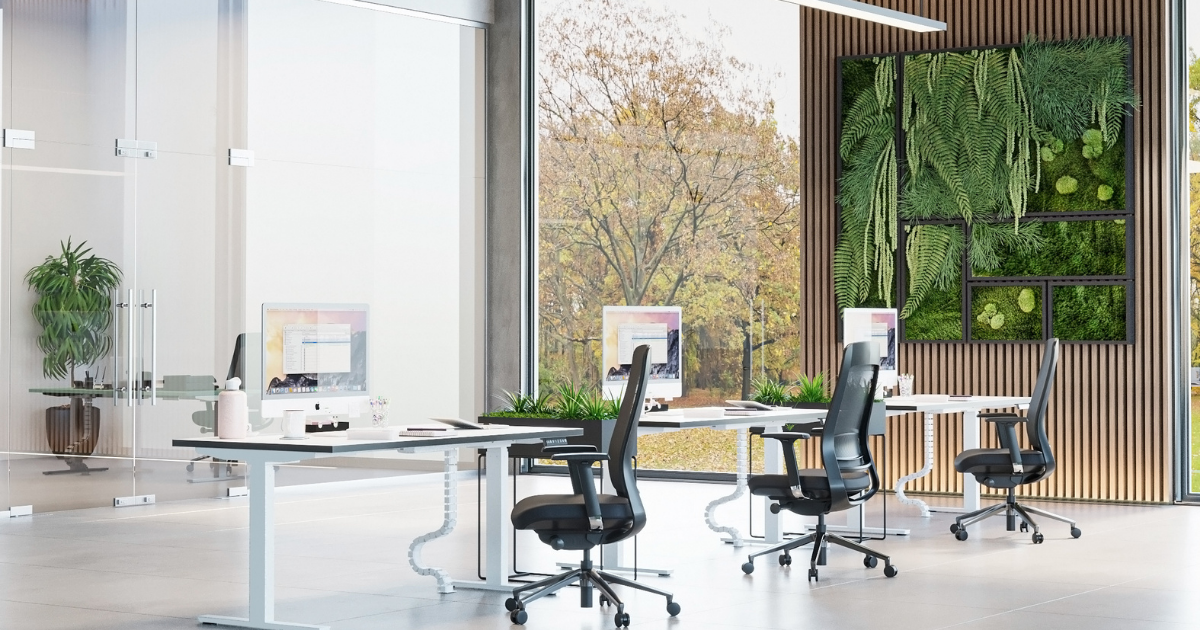
The investment in biophilic design translates into a multitude of measurable benefits for both employees and the organization.
A. Enhanced Health and Well-being
A. Reduced Stress Levels: Exposure to nature has been consistently linked to lower cortisol levels, reduced blood pressure, and a calming effect on the nervous system. Biophilic offices create a less stressful environment.
B. Improved Mood and Reduced Fatigue: Natural light, greenery, and natural aesthetics contribute to a more positive emotional state, combating feelings of sluggishness and boosting overall morale.
C. Better Air Quality: Live plants actively filter airborne toxins, absorb CO2, and release oxygen, significantly improving indoor air quality and reducing the incidence of “sick building syndrome.”
D. Faster Recovery from Illness: Research in healthcare settings shows patients with views of nature recover faster. While anecdotal in offices, it suggests a similar restorative effect.
E. Improved Sleep Patterns: Exposure to natural light cycles helps regulate circadian rhythms, leading to better sleep quality outside of work hours.
B. Increased Productivity and Cognitive Performance
A. Enhanced Concentration and Focus: Natural elements can help restore attention and reduce mental fatigue, leading to sustained focus on tasks. Quiet zones with natural elements can be particularly effective.
B. Boosted Creativity: Nature-inspired environments are associated with divergent thinking and increased innovative solutions. The visual and sensory richness stimulates the mind.
C. Improved Memory Retention: Studies suggest that exposure to nature can positively impact working memory and cognitive flexibility.
D. Reduced Absenteeism: Healthier employees take fewer sick days. By creating a less stressful and more physically supportive environment, biophilic design directly impacts attendance.
E. Faster Information Processing: A restorative environment allows the brain to function more efficiently, leading to quicker and more accurate decision-making.
C. Stronger Employee Engagement and Retention
A. Higher Job Satisfaction: Employees often report greater satisfaction in biophilically designed workplaces, feeling more valued and comfortable.
B. Attraction of Top Talent: In an era where workplace culture and environment are key differentiators, biophilic offices serve as a significant draw for skilled professionals seeking a holistic work-life balance.
C. Stronger Organizational Culture: A shared appreciation for a healthy, sustainable, and beautiful workspace can foster a stronger sense of community and shared purpose among employees.
D. Perceived Value of Investment: Employees recognize and appreciate an employer’s commitment to their well-being, translating into increased loyalty and advocacy for the company.
D. Environmental and Economic Advantages
A. Reduced Energy Consumption: Maximizing natural light (daylighting) and natural ventilation can significantly lower energy bills associated with artificial lighting, heating, and cooling.
B. Lower Operational Costs: Healthier employees mean fewer healthcare costs and reduced productivity losses due to illness.
C. Increased Property Value: Buildings that incorporate advanced green and biophilic design elements often command higher rental rates and sale prices, offering a strong return on investment.
D. Positive Brand Image: Companies that demonstrate a commitment to sustainability and employee well-being through their office design enhance their brand reputation and appeal to environmentally conscious clients and partners.
Practical Strategies for Biophilic Design
Transforming an office into a biophilic haven doesn’t necessarily require a complete overhaul. Even small interventions can yield significant benefits.
A. Strategic Planning and Assessment
A. Site Analysis: Understand the existing natural assets of the building and its surroundings (views, sun exposure, local climate, existing greenery).
B. Employee Needs Assessment: Survey employees to understand their preferences regarding light, air quality, quiet zones, and access to nature.
C. Phased Implementation: For existing offices, a phased approach can be more manageable, starting with high-impact, lower-cost interventions before moving to larger renovations.
B. Design Elements and Interventions
A. Maximize Natural Light:
A. Remove Obstructions: Ensure windows aren’t blocked by furniture or interior walls.
B. Use Reflective Surfaces: Light-colored paints and finishes on walls and ceilings help distribute light deeper into the space.
C. Install Light Shelves: Horizontal baffles above windows can reflect light onto the ceiling, distributing it further.
D. Consider Smart Glass: Dynamically tinting windows can control glare while maximizing daylight.
B. Integrate Living Vegetation:
A. Dedicated Plant Care: Ensure there’s a plan for watering, fertilizing, and maintaining plants. Consider professional plant services.
B. Variety of Plants: Mix sizes, leaf shapes, and textures for visual interest. Choose plants suitable for indoor office environments.
C. Green Walls in High-Traffic Areas: Lobbies, break rooms, and central corridors are ideal locations for a dramatic green wall.
C. Incorporate Water Features:
A. Low-Maintenance Fountains: Select fountains that are easy to clean and replenish, with minimal splash.
B. Strategic Placement: Locate water features in quiet zones or collaboration areas where their calming effect is desired.
D. Select Natural Materials:
A. Wood and Stone Accents: Use these materials for wall panels, flooring, reception desks, or accent furniture.
B. Natural Fabrics: Opt for upholstery and curtains made from wool, cotton, or linen.
C. Exposed Elements: Where appropriate, expose natural concrete, brick, or timber structures.
E. Optimize Air Quality:
A. Advanced Filtration Systems: Invest in high-efficiency particulate air (HEPA) filters in HVAC systems.
B. CO2 Monitoring: Install sensors to monitor carbon dioxide levels and adjust ventilation accordingly.
C. Air Purifiers: Supplement with standalone air purifiers in areas with less natural ventilation.
F. Enhance Sensory Experience:
A. Acoustic Panels: Use natural or natural-patterned acoustic panels to absorb sound and reduce noise distractions.
B. Sound Masking Systems: Implement systems that introduce subtle, ambient noise to make conversations less distracting.
G. Design for Prospect and Refuge:
A. Clear Sightlines: Arrange furniture and partitions to allow for unobstructed views across the office.
B. Quiet Booths/Pods: Install soundproofed pods for individual focus work or small, private meetings.
C. Breakout Areas: Create comfortable, less formal zones with soft seating and natural elements for relaxation and informal collaboration.
H. Art and Graphics:
A. Nature-Inspired Art: Display artwork that depicts natural landscapes, flora, and fauna.
B. Biomorphic Wall Graphics: Use patterns that mimic natural forms on walls or glass partitions.
Challenges and Considerations for Biophilic Offices
While the benefits are compelling, implementing biophilic design is not without its challenges.
A. Initial Cost: High-quality natural materials, living walls, and advanced ventilation systems can have a higher upfront cost compared to conventional office fit-outs. However, the long-term ROI often justifies this.
B. Maintenance and Upkeep: Live plants and water features require ongoing care, including watering, pruning, and pest control. This necessitates dedicated resources or professional services.
C. Space Constraints: In dense urban environments, maximizing natural light and views can be challenging for interior office spaces, requiring creative design solutions.
D. Allergies and Pests: Careful selection of plant species is crucial to avoid triggering allergies. Proper maintenance is also necessary to prevent pest infestations.
E. Client and Employee Buy-in: Educating stakeholders on the benefits of biophilic design is important to secure their support and ensure successful adoption of the new environment.
F. Climate Suitability: Certain biophilic elements, like extensive natural ventilation, may not be suitable for all climates, requiring smart adaptations.
G. Integration with Existing Infrastructure: Retrofitting biophilic elements into older buildings can be complex, requiring careful planning to integrate with existing HVAC, electrical, and plumbing systems.
Seamless Integration of Nature and Technology
The trajectory of biophilic design suggests an even deeper integration of nature and technology. Imagine offices that:
A. Respond Intuitively: Sensors monitoring CO2 levels trigger natural ventilation or plant growth light adjustments. AI-driven systems learn employee preferences for natural light and automatically adjust blinds.
B. Offer Immersive Natural Experiences: Large-scale digital displays could project dynamic, high-definition natural landscapes with corresponding ambient sounds, providing a simulated natural escape.
C. Support Urban Reforestation: Office buildings become active contributors to urban biodiversity, with integrated rooftop gardens, vertical farms, and green corridors that connect to the wider urban ecosystem.
D. Become Living Laboratories: Buildings themselves could be equipped with real-time feedback loops, using data from occupant well-being and environmental performance to continuously optimize the biophilic elements.
E. Feature Self-Sustaining Greenery: Automated irrigation, self-regulating light systems, and even robotic plant care could reduce maintenance burdens for extensive indoor vegetation.
Conclusion
The biophilic office represents a fundamental shift in how we conceive of our working environments. It’s an acknowledgment that human well-being is intrinsically linked to our connection with the natural world. By consciously weaving nature into the fabric of our workplaces, we are not only creating more beautiful spaces but also fostering healthier, happier, and more productive individuals. This approach is not just a trend; it’s a profound understanding of what truly makes us thrive, laying the groundwork for a more humane and sustainable future of work.

